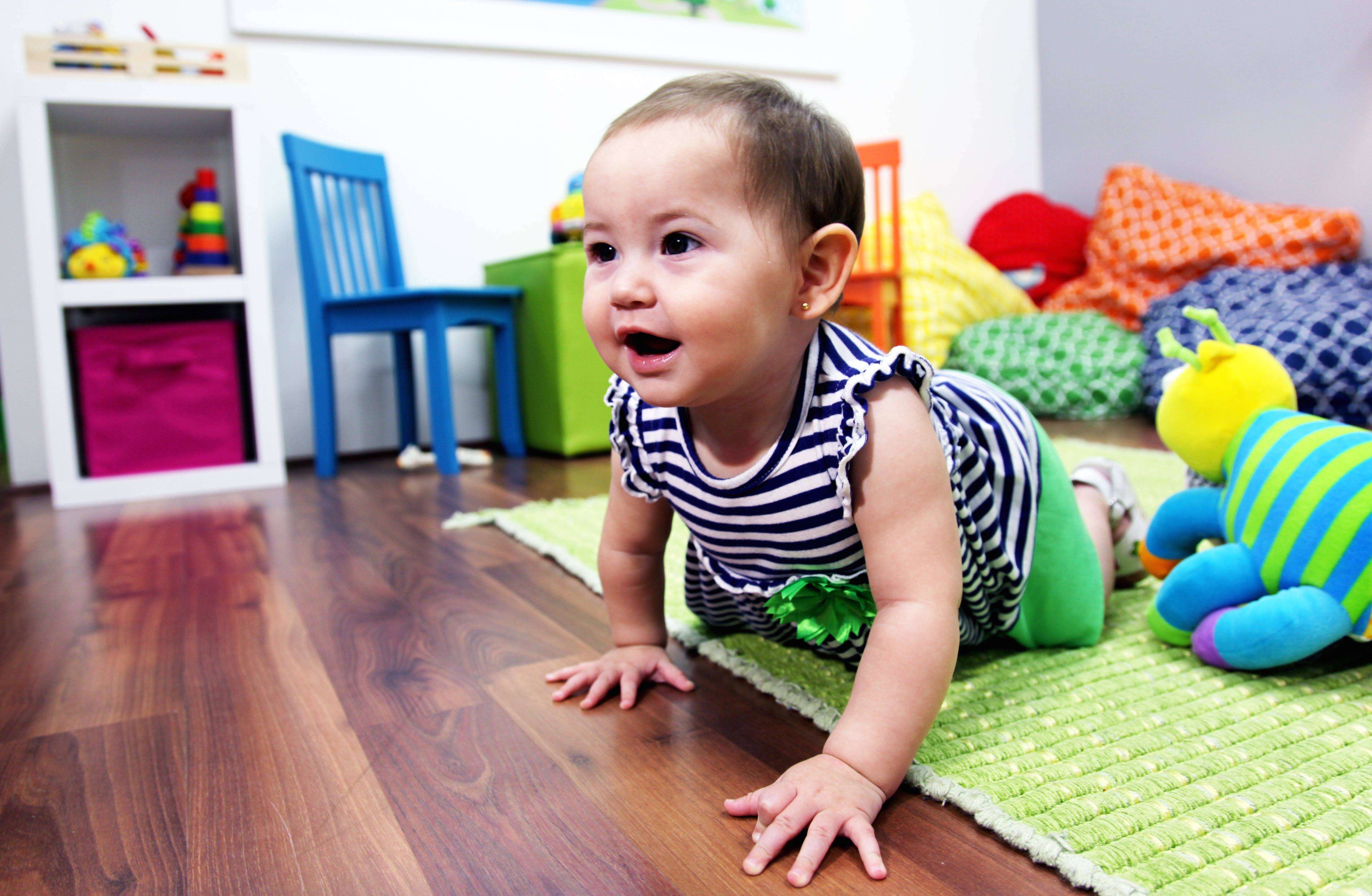Key Points:
- Crawling is an exciting and important developmental milestone for babies, typically occurring between seven and nine months of age.
- There is no “right” way for a baby to crawl, as each child develops differently. There are various styles of crawling, and it’s important to allow babies to find their unique method.
- Crawling isn’t always necessary for a child’s development, and some children may skip the milestone altogether. However, it’s still important to ensure that there aren’t any underlying developmental issues preventing a child from crawling.
- Baby-proofing the home is crucial for keeping a crawling baby safe. Tummy time can help strengthen the muscles needed for crawling, and it’s important to encourage babies to reach for toys during this time.
Seeing your baby grow and achieve all of their milestones can be very exciting! But the moment you see your little one start crawling you’ll know that the real fun has begun! As you experience all of this excitement, some questions may come up!
Here are our answers to the FAQ about crawling
When should my baby start crawling?
Typically babies crawl at around seven to nine months, but at around six months most babies start trying to move around. As they figure out how to do that arm-leg-arm-leg movement, they sometimes go backward first and then learn how to crawl forward.
It’s important to remember that all babies are unique and will develop skills at different rates, some more quickly than others. (Note: If your baby is premature they will probably take longer than other babies).
The process of learning how to crawl is actually pretty complex. Babies need to coordinate their arms and legs and develop muscle strength in their arms, shoulders, and legs to support their weight. But learning to crawl not only concerns gross motor skills; by crawling, babies develop different abilities and skills like balance, spatial awareness, coordination, and confidence.
Is it alright if my baby crawls differently than other babies?
Experts say there is no “right” way to crawl, the process of learning to crawl differs from one baby to another. Just remember, your little one will find their unique way to do it and the important part is that they can move around and explore their surroundings.
Here are six different crawling styles that your baby may experiment with:
- Classic crawl – Your baby moves one arm and the opposite knee forward at the same time.
- Crab crawl – Just like at the beach, the crab bends one knee and extends the opposite leg to scoot forward.
- Belly crawl – Your baby moves their body forward while dragging their belly against the floor.
- The rolling wonder – Your little one rolls from one place to another; because who needs crawling when rolling can get you where you need to go, right?
- Bear crawl – it is similar to the classic crawl, but babies keep their elbows and knees straight, and as they walk, use their hands and feet like a bear.
- The bottom scooter – Your baby slides around on their bottom using their arms to move forward.
My baby hasn’t started crawling. Should I be worried about it?
Crawling is commonly considered an important developmental milestone in a baby’s life. However, not all babies will crawl or even need to do so. In fact, crawling isn’t listed on the “Denver Development Screening Test”, a tool used by pediatricians to measure children’s development. Studies have shown that crawling does not seem to be predictive of other early developmental milestones, such as standing up and walking.
But, although crawling isn’t crucial and some babies may skip it altogether, you may want to check with your pediatrician if your baby is over one year old and isn’t crawling and/or is unable to hold their head up, roll, sit upright, support their body weight, or lacks the energy to get around.
What about baby-proofing?
Is your baby on the go? Then you may want to make sure your house is baby-proofed. Crawl around your home and see what potential hazards may be at your baby’s reaching level. Remember to cover electrical outlets and tie cords, lock away poisonous home cleaning supplies that may be within your baby’s reach, and cover sharp corners on furniture and tables. It is very important to make sure your home is child-proofed so that your baby has a safe environment where to play and explore!
What can I do to help?
No matter where experts stand on the crawling issue, they all agree on the importance of tummy time. By playing on their bellies, babies develop the muscle strength in their shoulders, arms, back, and torso; muscle strength needed to crawl. Sometimes all it takes is to give them supervised tummy time each day so that they can practice.
You can try encouraging your baby to reach a toy during tummy time. Another thing you can do is to encourage your kid to reach for the toys they like, to see if they can move forward to pick the toy. Remember there’s no need to rush them to achieve any particular milestone, but there is no harm in encouraging tummy time and letting nature take its course.








